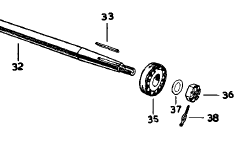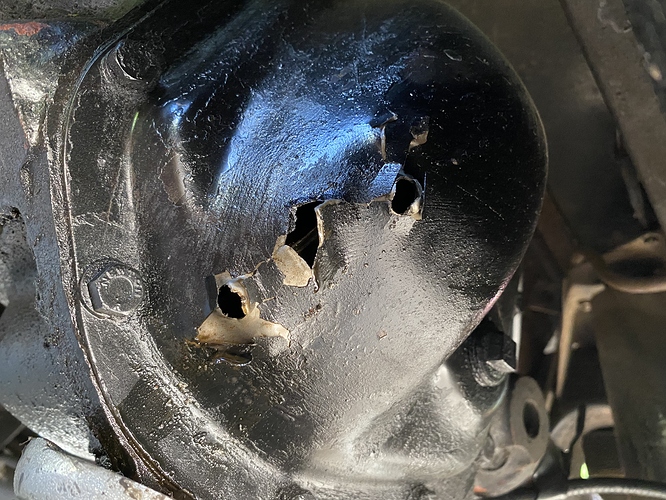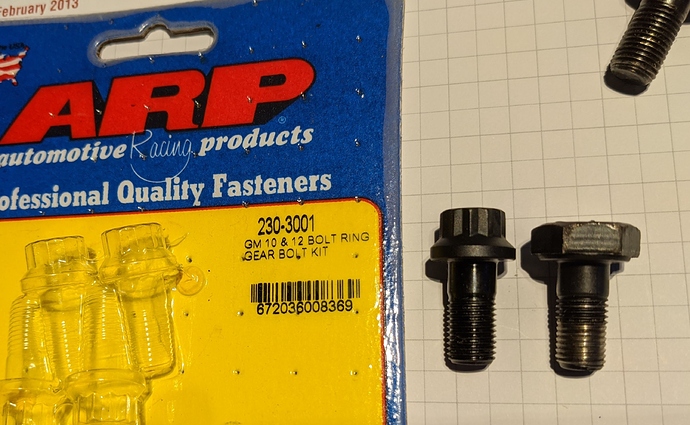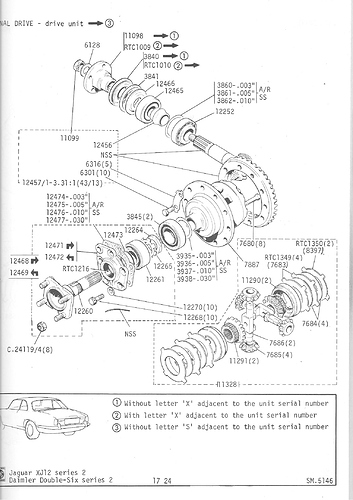Last weekend I took the car out for a nice drive, Laurel Canyon onto Sunset Blvd, to Sepulveda and home. If you are from LA these roads should be familiar. The car drove great, I have 700 miles on it since completing the mechanical restoration on the car. I parked the car, opened the garage fired it up put it into reverse and the car was stuck, as if the right rear wheel was locked up, I put into 1st gear, then reverse and the car freed up and was fine, I drove it some more, no issues. I pulled off the right rear drum and everything looked fine, I convinced myself it was not properly in gear, or a brake shoe had bound up. Today I took it on a drive staying closer to home, a few miles from home I started to hear, and feel a tick, tick, tick sound, I turned around to go home, the noise stopped, I drove it about 15 miles through canyon roads, no noise no issues…I then headed further away from home and it started to tick very loud, I considered having the car towed, but limped the car home at 8-10 MPH for a few miles, it sounds like something is happening inside the drum, I parked the car, happy to have made it home. I then had the brainstorm Idea to get my phone, and record the horrible ticking noise the car was making, I got in, fired it up, no more noise, drove it around the block 4 times, no noise. When the engine was off, coasting it made noise, engine off car in neutral, noise, engine on/off clutch in, noise. I expect to find a problem when I remove the Left rear drum and inspect things, maybe a brake shoe rubbing, or a detached lining. Anyone have any ideas? I don’t think it is the gearbox, or the clutch.
Thank You
Andy
A broken carrier in a ball bearing in the axle would make a ticking sound, and might lock up sometimes.

Rob,
Thank You!
I will try to dig into it next weekend.
Andy
Just have a look at the U-Joints while the car is in the air, just in case…
It was not the U joints, brakes or wheel bearings…the ring gear bolts backed out and 2 broke off, others are loose. The gears look fine other than the sheared of portion of the bolts in the ring gear. I repaired the housing cover and will be taking it to a rear differential shop this week. I removed the fuel tank, exhaust pipes, and spare tire ell for easy access.
More common than it should be.
Here’s another one, from a '53 car.
They didn’t unscrew, they sheared off.


I seem to recall, the bolt size was increased about 1954 or 55.
I’m new to XKs, but a good friend had this happen in France a while back. The errant bolts took teeth off his crown wheel, but enough remained to get home carefully. A full axle rebuild was needed. On his advice, when I dismantled my car I contacted Alan Slawson of AJS engineering who took the axle away for rebuilding. He discovered loose bolts, some well on the way to falling out, a CRP set that was not re-usable, grooves worn in the axle shafts affecting oil seal seating and badly worn bearings. He managed to re-use the axle casing, but not a lot else. My car is a June '55 140 DHC and had the smaller bolt sizes, now replaced with larger, using locktabs and threadlocker to be safe.
The 3/8“ ring gear bolts are the Achilles Heel of the Salisbury 4HA axle. North American Dana 44 axles use 7/16“ bolts, as did the later Salisbury IRS units.
Opinions will vary here, but I personally avoid the soft iron locking tabs in any and all forms. In my experience, they plasticize under compression, reducing the bolt stretch required to tension these critical threaded fasteners.
In best practice, critical connections maintained by threaded fasteners maintain the fastener in a purely tensile state. Essentially, an extremely stiff spring. A great deal of the sheer strength produced by any threaded fastener assembly is generated by the frictional force between the two parts. Frictional force is a function of the compressive force and the static coefficient of friction between the parts. Once the parts begin to move relative to each other, the static frictional coefficient is no longer valid, and the coefficient for sliding friction becomes the rule. The coefficient of friction for sliding, not static, parts can easily be one tenth the static condition. When the bolt tension is reduced, as it must when the stretch is reduced, the joint friction also decreases, allowing the parts to displace. This not only imparts a sheer load to the bolts, it imparts a bending moment at the first exposed thread. Pure tensile stress is uniformly distributed across the full minor diameter of the thread section. But because the bending stress affects one small point of the exposed thread root, the unintended bending stress quickly over-stresses the bolts and they fracture.
Ring gear bolts and flywheel bolts are about the only places I would ever use a thread locking compound.
Is the best way to reassemble it to lose the locking plates, use lock washers and lock tight?
Andy
In general, I would never use any split-washer lock washer under any critical fastener. That is not what they are used for. Save them for your lawn mower. If you require a washer, use flat, hardened washers, as you would for a head bolt or main cap bolt.
What is really called for here is a better bolt, one with higher tensile strength. The two ways to get there are with a greater cross section area, or a bolt with higher allowable tensile stress. Since the ring gear is already drilled for 3/8" bolts, going larger, like 7/16", is not practical, so what’s needed is a bolt with higher allowable tensile stress.
Lots of really good threaded fastener technical information here:
You should be able to find someone In the LA area who specializes in off-road vehicles. The Dana 44 is substantially the same as the Salisbury 4HA, and is used in countless off road Jeeps, Isuzu, etc. Rock climbing and very tall tires are extremely hard on axles and ring gear bolts. Those guys have a lot of experience with problematic ring gear bolts.
Here is what ARP has to say. I already had come to that conclusion and have a set on the shelf. In the photo below, ARP bolt in question on the left, trashed OEM Salisbury bolt on the right.
Hi Mike,
At this time the closest ring gear bolt we offer is:
kit # 230-3001, it contains:
12) bolt # 4AJ.800-1
.800” UHL
3/8-24 (right hand thread)
.250” shoulder
.388” head height
hope this helps
Best regards,
Steve Chan
Technical Support
Automotive Racing Products, Inc.
800-826-3045
ARP-bolts.com
I understand the usual failure mode to be fatigue fracture either under the head as in my photo above, or fatigue fracture down in the crown wheel (the shorter bolt in my picture).
Mike’s photo shows one with a larger head than mine, but still on a 3/8-24 shank.
I’m wondering, is this failure mode characteristic of all Salisburys, or only all 4HAs, or including IRS units, or all Dana 44s, or just those with the smaller head on the 3/8-24 thread, or just of an age range, or just those that have been raced or driven hard?
What do the current Dana 44s have?
It seems like I’ve only heard of this failure in axles of the mid 1950s.
Just curious, but I like to understand all mechanical failures.
Of the 3 or 4 Salisbury 2HA differentials I have had my hands on, I have never seen a loose ring gear bolt. Of the half dozen XK 4HA differentials I have had, I think every one had at least loose bolts, and probably half of them had broken bolts. They both use 3/8-24 bolts. I believe (going from memory here) that at some point the Salisbury 4HA differentials may have also changed to 7/16" bolts. I do not have any experience with the Salisbury IRS differentials. Dana 44 differentials have 7/16 bolts.
Still curious, I found that the steel locking tabs were used in all E-Type and XJ12 IRS differential crown wheel bolts up through at least 1976.
We don’t hear of this failure in IRS diffs.
It makes me wonder if there is another factor involved in the failures of mid 1950s diff bolts.
Poor steel, low yield strength?
Insufficient torque specified on initial assembly?
Defective torque wrench on the assembly line, wrong reading?
Failure to torque at all, i.e. assembler error?
I guess we’ll never know.
What size are the 6301 bolts? Weren’t the later bolts 7/16"?
I thought of that too, but the XJ12 parts book doesn’t have a list of fasteners, and with a number like that it is probably direct from the diff maker.






